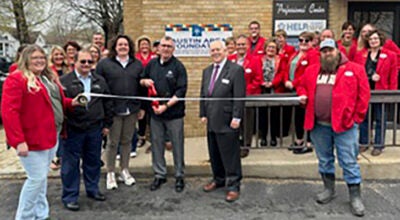Time to keep up with times
Published 7:50 am Friday, June 25, 2010
Some time ago, a relative who lives in a neighboring state told me that he was going to have cataract surgery. He’d learned of the need when he went down to his local Department of Motor Vehicles for a routine driver’s license renewal — and failed the vision test.
“I knew I was having trouble seeing, but I was hoping I could still pass the test,” he told me afterwards.
The DMV gave him a waiver — time enough to get cataract surgery done and then come back and pass the test. That meant he could keep driving for six weeks or so, despite eyes that were too bad to pass a basic vision test.
For my relative, that grace period was a relief, because to be without a car would have meant immense difficulty in getting groceries, making trips to the pharmacy or visiting the doctor.
For me, it was alarming. Do we really want drivers out there who can’t see well enough to pass a basic vision test? There are worse things than needing a ride to the pharmacy, and crashing a ton of automobile into something or someone would be one of those things.
I was reminded of this incident, which did end happily, when I read of a case that had a far worse ending. An 87-year-old Freeborn County man was sentenced this week after being found guilty of criminal vehicular homicide. The man drove through a stop sign out in the country and was hit by a motorcyclist who died in the crash, according to an account of the case in the Albert Lea Tribune.
The elderly driver had a blood alcohol level of .08, which made it a case of drunk driving. But, the Tribune report said, the Freeborn County attorney noted during sentencing that there may have been other factors involved: The driver was on medication for cancer, had lost the vision in one eye and had diminished hearing.
Putting aside the alcohol issue, why was the man still driving?
Most likely for the same reason my aging relative was so glad to keep his own driving privileges. In much of America, especially our rural areas, it’s very hard to get by without a car.
Some big cities have safe, efficient public transportation that can replace the need for a motor vehicle. Some of us, as we age, will be fortunate enough to have relatives caring — and driving — for us. Most of us will have neither, so we must drive.
And even where there is some form of rural public transportation, such as the Austin-Mower County (AMCAT) system, few feel like it replaces the independence lost when they can no longer hop in a car at a moment’s notice and make a trip to the store or to a friend’s house.
The problem of aging drivers is not going to go away. It is going to intensify as Baby Boomers age into their 80s. A generation that grew up with the freedom of the automobile, Boomers aren’t likely to give up that freedom easily, even when they know their physical and mental skills are fading.
The answers are obvious, although very difficult to implement.
If we’re going to have a culture that is not a slave to the automobile, we have to stop clustering most shopping opportunities in a few large buildings on the edge of town. We need neighborhood centers for healthcare and government services. We need to have good sidewalks along every street with pedestrian overpasses at busy crossings. We need a clearly thought-out plan for mixing car and truck traffic with slower forms of transportation such as small, electrical vehicle.
None of those are easy. None are inexpensive.
But are they any more costly than depriving us of our independence as we age or, worse, forcing us to navigate thousands of pounds of steel and aluminum through crowded streets?
City planners — not just in Austin, but throughout our nation — should be addressing the issue now.




